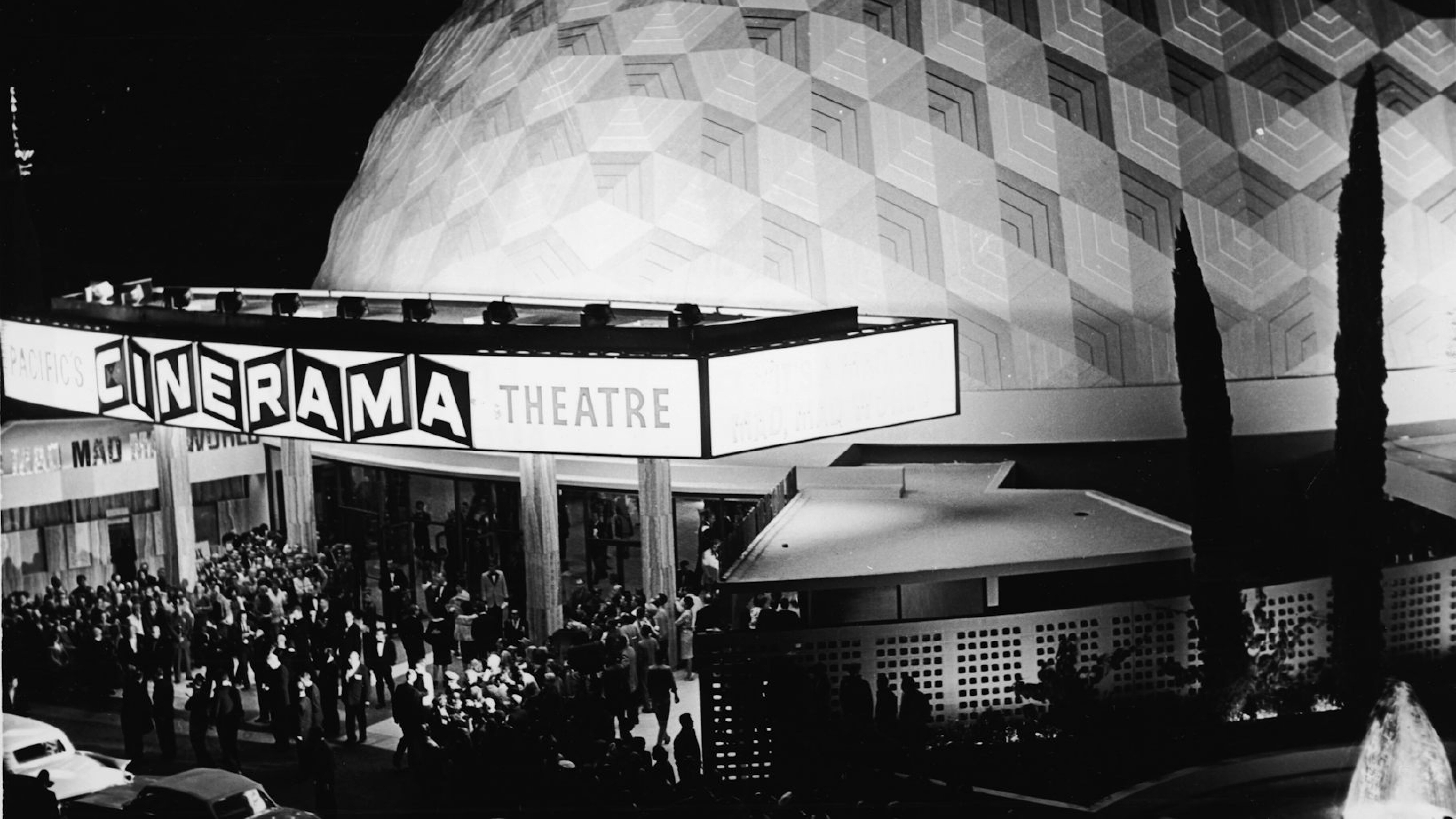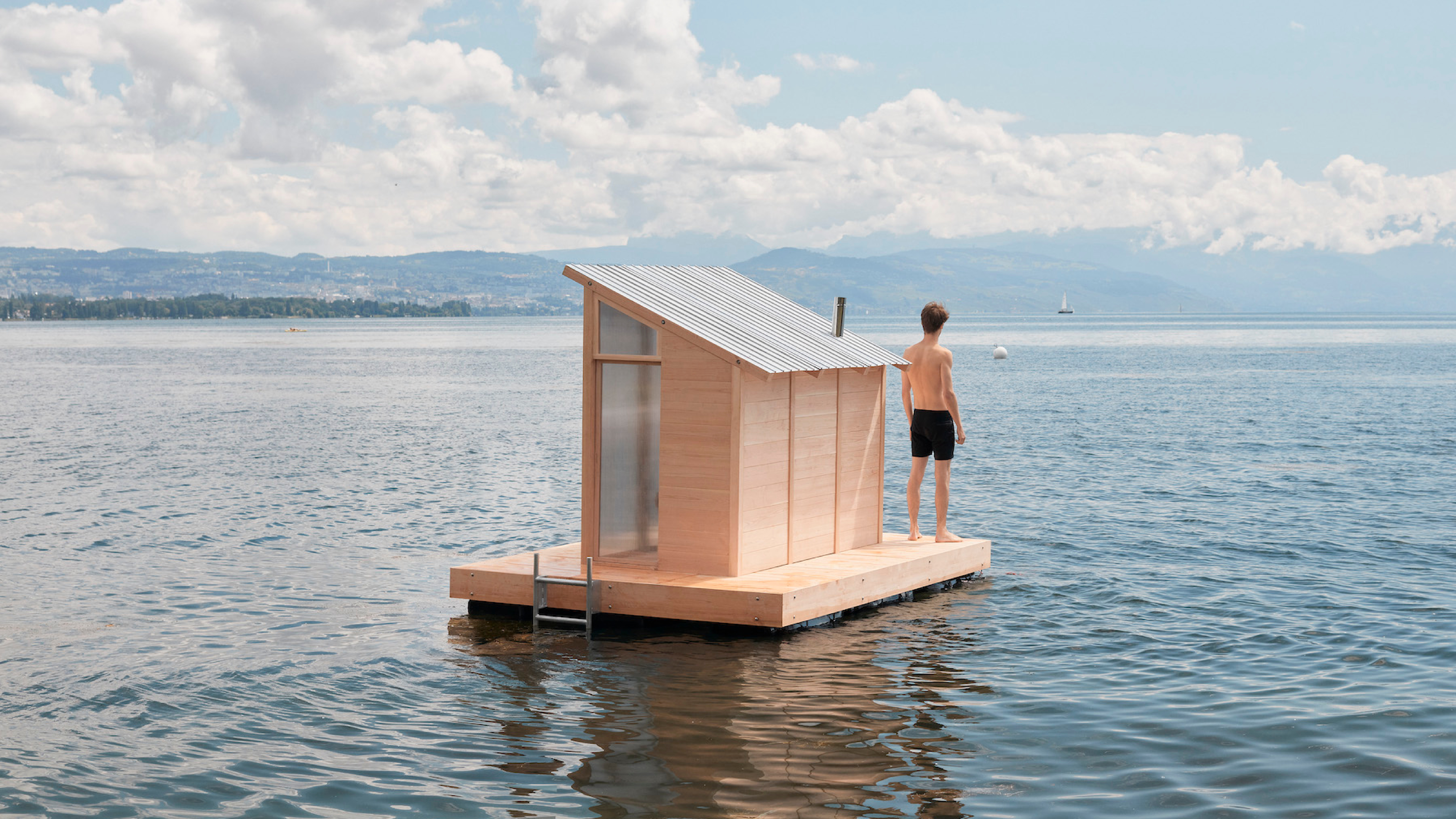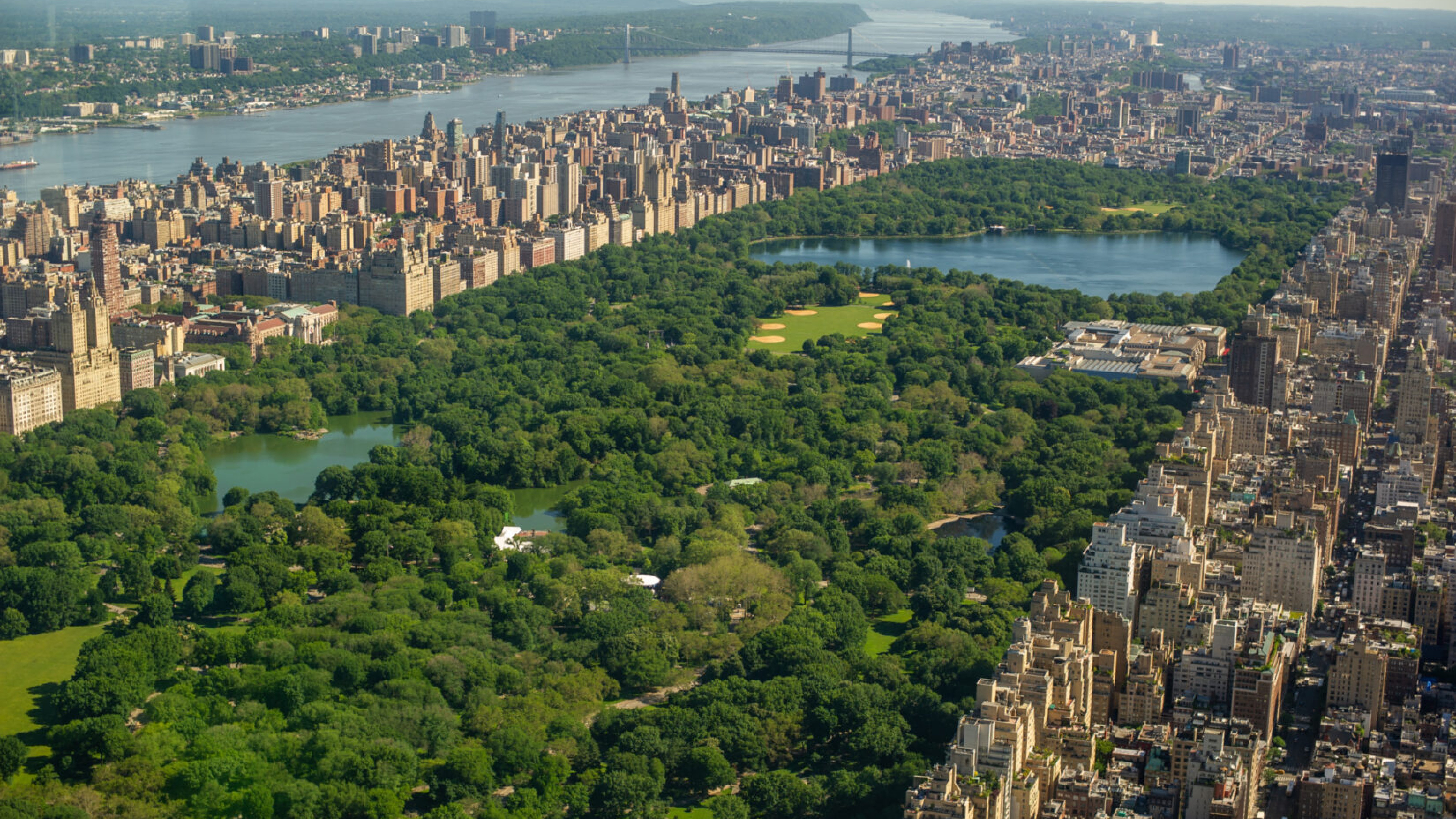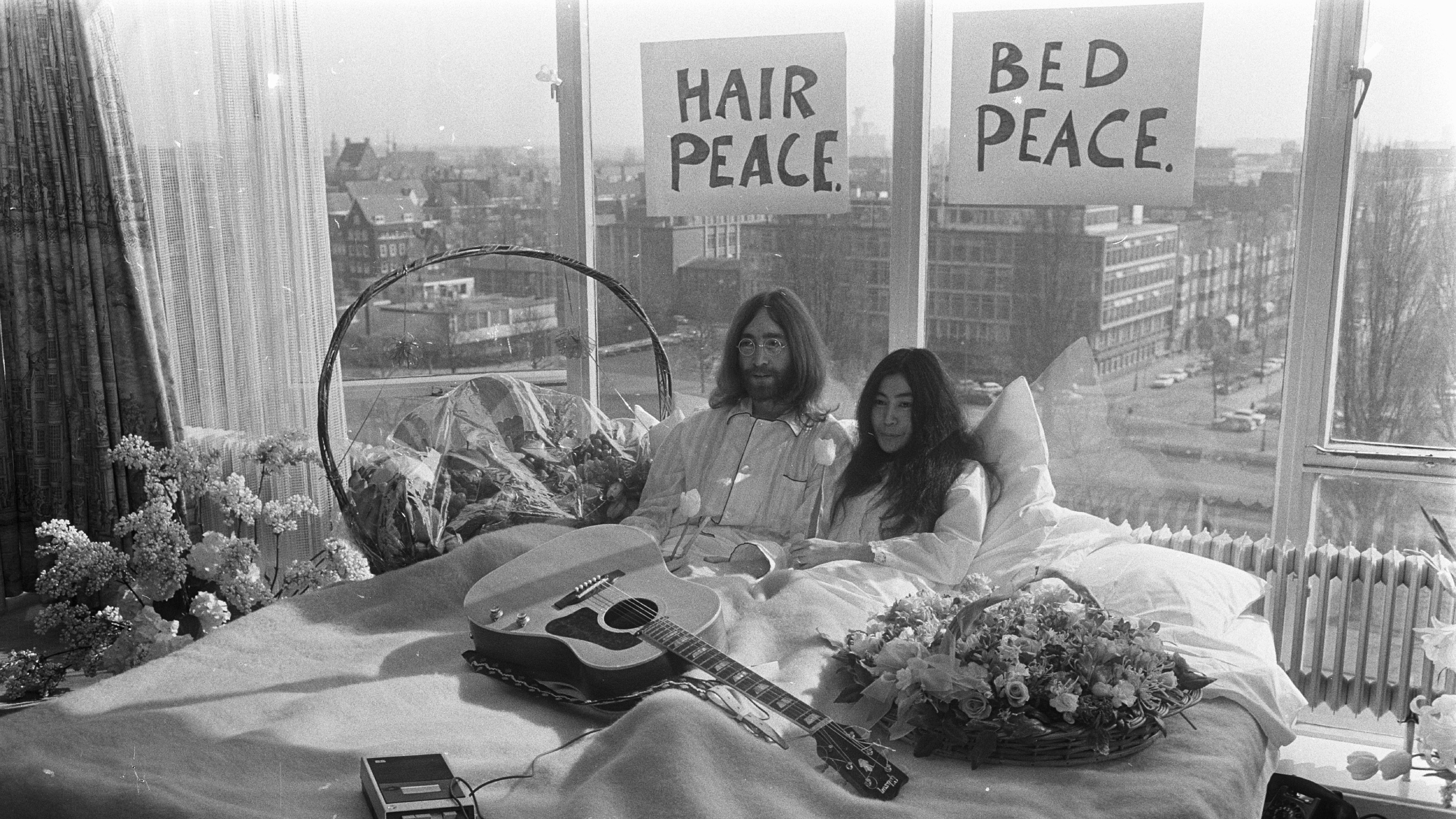Spaces is an exercise in curiosity about communal living and domestic activity. Each week we’ll select a Nation amenity and explore some of our other favourites from around the world, often drawn from fiction and throughout time.
For this edition we're celebrating one of our favourite communal spaces: the cinema.
The history of cinemas dates back to the late 19th century when Thomas Edison’s invention of the kinetoscope paved the way for the motion picture industry. The Lumière brothers in France soon held the first public screening in 1895, using their cinématographe to project films for audiences. Early cinemas, or nickelodeons, emerged in cities around the world in the early 1900s, where people paid five cents to watch short films in converted storefronts.
As the popularity of films grew, so did the grandeur of theatres. By the 1920s, the advent of Hollywood’s Golden Age transformed cinemas into opulent movie palaces with elaborate decor, like New York’s Roxy Theatre and Los Angeles’ Grauman’s Chinese Theatre. These palaces were designed to attract audiences with luxury, turning cinema-going into an experience of escapism and social connection.
The first cinema in Australia is widely recognized as the Athenaeum Hall in Melbourne, which began screening films in 1896, just a year after the Lumière brothers’ first public screening in Paris. Originally built in the 1830s as the Melbourne Mechanics’ Institution, the Athenaeum became a cultural venue, hosting lectures, concerts, and live performances before it began showing films.
Another early contender in Australia’s cinema history is the Lyceum Theatre in Sydney, which began screening films in 1908 and was among the first purpose-built cinemas in the country. These venues not only brought films to Australians but also paved the way for the country’s own film industry, which would grow significantly in the years following. Today, the Athenaeum’s history is celebrated as a foundational chapter in Australia’s cinematic journey, symbolizing the nation’s early embrace of film culture and its contributions to global cinema.

cinerama dome
The Cinerama Dome, located in Hollywood, California, is an iconic architectural landmark and one of the most famous theatres in the United States. Designed by architect Welton Becket and completed in 1963, the dome was initially built as part of the Cinerama project, which aimed to create an immersive cinematic experience using a multi-projector system to display wide-format films. The structure itself is a remarkable feat of engineering, featuring a unique geodesic dome design that stands out in the urban landscape of Los Angeles.
The Cinerama Dome first opened its doors to the public on January 28, 1963, showcasing the film It’s a Mad, Mad, Mad, Mad World. This revolutionary theater offered an unprecedented viewing experience, with its large curved screen and surround sound, making it a popular destination for film lovers. The Cinerama Dome was instrumental in the evolution of cinematic technology and was one of the first theatres to provide an immersive viewing experience that enveloped audiences in the film.
Over the years, the Cinerama Dome has hosted numerous premieres and special events, becoming synonymous with Hollywood glamour. In 1973, it was converted to a single-screen theater, allowing for a more traditional film presentation. Today, the dome continues to operate under the ArcLight Cinemas brand, screening a mix of mainstream, independent, and classic films. Its distinctive architecture and rich history have earned it a place on the National Register of Historic Places, making it not only a cinematic treasure but also an important cultural landmark that celebrates the art of film and the evolution of cinema as a communal experience..


Archipelago Cinema
Archipelago Cinema is an extraordinary floating cinema located off the coast of Koh Yao Noi in Thailand. Designed by German architect Ole Scheeren in 2012, this cinema was initially built as a temporary venue for the Film on the Rocks Yao Noi Festival, but its enchanting concept and unique setting quickly made it an icon. The theater consists of a floating platform made from recycled materials, including old fishing rafts and local bamboo, and is anchored in the tranquil waters of a lagoon, surrounded by breathtaking limestone cliffs.
This cinema immerses viewers in a truly unique experience. Instead of traditional seating, patrons sit on a platform that gently drifts with the movement of the water, while films are projected onto a screen suspended against the dramatic backdrop of the cliffs. The ambiance created by the lapping waves, open sky, and natural surroundings is unlike any other cinema in the world, offering audiences an unforgettable blend of nature and art.
After the festival, Archipelago Cinema was dismantled, but it is often reconstructed for special events, keeping its legacy alive. More than just a film venue, it represents a harmonious blend of architecture and nature, reminding audiences of the power of cinema to create unforgettable experiences. Archipelago Cinema’s design and purpose reflect Scheeren’s vision of cinema as a means of connection, not only between people but also with the environment around them.

SOL CINEMA
Sol Cinema is a tiny, solar-powered cinema located in Wales, and it’s celebrated as the world’s smallest mobile solar-powered theatre. Housed in a converted vintage 1960s caravan, the Sol Cinema was created by Jo Furlong and Paul O’Connor in 2010 with a mission to offer a sustainable and intimate film-watching experience. Its interior is fully outfitted to resemble a classic movie theatre, with red velvet seating, cozy lighting, and a small projection screen.
What makes Sol Cinema particularly special is its dedication to eco-friendliness. Solar panels on the caravan’s roof power the cinema, providing enough energy for the projector, sound system, and lights. The entire operation is carbon-neutral, and the cinema seats only eight adults or twelve children, making each screening a truly personal experience. Sol Cinema is often seen at festivals, community events, and weddings, where it screens short films, animations, and independent projects that align with its ethos of environmental consciousness and artistic expression.
Sol Cinema’s unique combination of sustainability, creativity, and charm has made it a beloved attraction. It brings a sense of whimsy and wonder to audiences, demonstrating how small spaces and alternative energy sources can still deliver powerful, memorable experiences. By embodying green principles, Sol Cinema reminds us of cinema’s potential to inspire not only through storytelling but also through its own practices..

HOT TUB POP-UPS
Hot Tub Cinema redefines the cinema experience by letting audiences enjoy movies from the comfort of inflatable hot tubs. This unconventional, pop-up cinema first appeared in London in 2012 and quickly gained popularity for its social, relaxed take on movie-watching. Set up in open-air venues or warehouses, Hot Tub Cinema features a series of hot tubs arranged in front of a large screen, where groups of friends can relax, enjoy drinks, and watch cult classics and blockbusters together.
The atmosphere at Hot Tub Cinema events is lively and communal, almost like a party with a movie as the backdrop. Patrons can order food and drinks directly to their tubs, and the screenings are often accompanied by DJ sets or themed decor. Hot Tub Cinema has also expanded to various cities around the UK and internationally, creating a network of pop-up events that draw crowds looking for a unique night out.
While it might sound quirky, Hot Tub Cinema appeals to the social aspect of cinema, turning film-watching into a group experience. The novelty of watching a movie from a hot tub is a big part of the attraction, but it’s the interactive and festive atmosphere that has kept audiences coming back. Hot Tub Cinema brings together elements of relaxation, socializing, and entertainment in a way that challenges traditional cinema boundaries, making movie nights more immersive and memorable..

SUN PICTUREs
Sun Pictures in Broome, Western Australia, is the world’s oldest operating outdoor cinema, a historic gem that has been screening films since 1916. Originally a Japanese-owned store that sold Asian goods, the building was converted into a cinema when owner Yamasaki Takazawa noticed the local population’s growing interest in moving pictures. Today, Sun Pictures remains in its original location in Broome’s Chinatown, offering audiences a unique open-air cinema experience that is steeped in history.
One of the most unique features of Sun Pictures is that it sits in an area prone to tidal flooding. Early audiences would occasionally find themselves wading through ankle-deep water as the tides rose, which only added to the cinema’s quirky charm. The cinema retains its historic wooden structure, benches, and distinctive atmosphere, making it feel like a trip back in time.
Sun Pictures screens both contemporary films and classics, with seats set under the night sky, allowing patrons to watch movies while enjoying the tropical climate and stunning views. This open-air setup gives a relaxed, nostalgic feel, and the cinema has become an integral part of Broome’s cultural identity. Sun Pictures is more than just a cinema—it’s a living piece of history, showcasing how one small cinema has withstood time and nature, creating a magical experience that connects visitors with Broome’s past and the timeless appeal of outdoor movie-watching..




